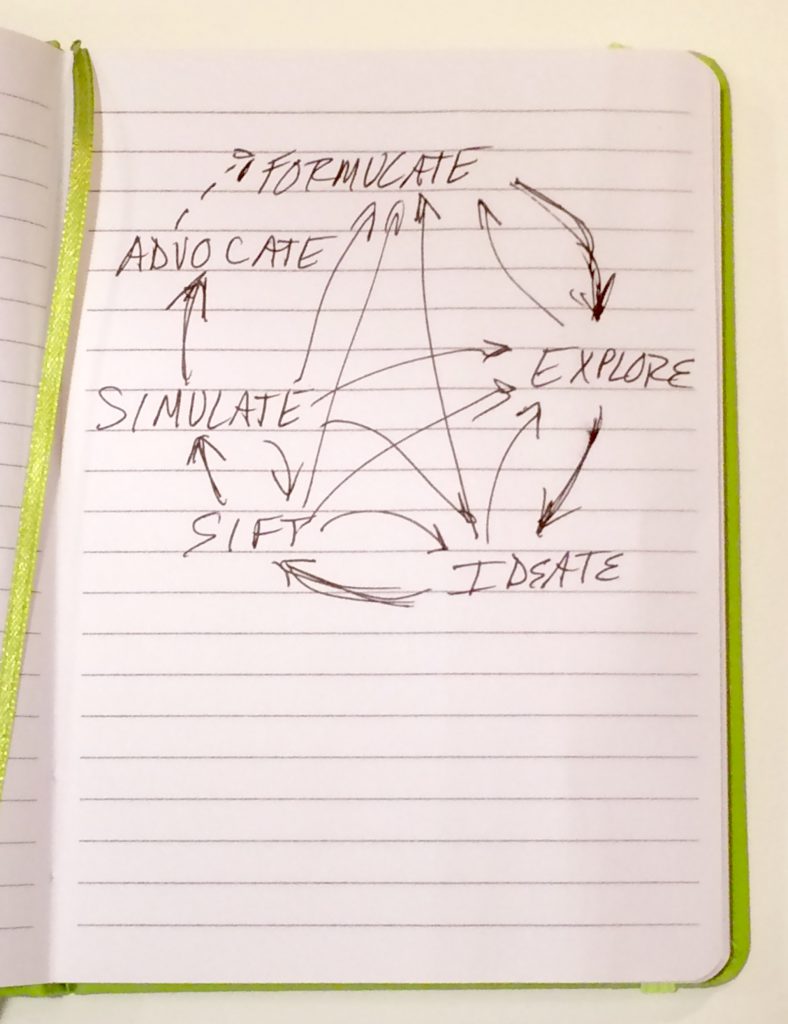This post is third in a series of six to get ready for the new year. . . . The year 2020 reminds me of perfect vision! 2019 was a year of many initiatives, goals, and needs; it’s time to put everything in focus. Here are the links if you missed the first or second post.
A college senior in mathematics and education studies shared with me a great, entertaining article by Paul Lockhart about a nightmare where music and art classes were taught like math classes. (He also ended up writing a book on the topic.) And while this opens up questions about how far we have or have not come in teaching mathematics, I see an even broader theme for our 2020 focus.
Paul drives home the point that students learn the arts by doing; musicians and fine artists are makers. In recent years, the Maker Movement has led schools to create Maker Spaces and develop STEM programs. Schools have also instituted Genius Hour. But what if, instead of finding a time for students to “make it” and “do it,” schools looked at the basis of all learning as engaging students in such challenges . . . all day long!

Generally, people think of a related Design Process in terms of a STEM challenge. In the STEM and STEAM schools we design, we focus on using Design Process all day, no matter what the subject. All learning should begin with a “felt need” that arises from presenting students with a challenge. I’m not talking about just a big, real-world problem-based unit; even a lesson can begin with a “make it” or “do it” type challenge.
One hurdle I see is that the world of education seems to think of learning in terms of discrete skills, 40-minute (or thereabouts) learning sessions, and pacing guides. We need to start thinking of subjects in terms of what students can create, make, or solve to then determine which discrete skills will be needed. You create a curriculum by, over time, ensuring that all of the necessary skills are embedded in the various challenges.
Note, too, that all making and doing does not have to be three-dimensional projects. Just to stick with Paul’s math focus for a minute, what if you asked your students to make a design for an indoor ski dome by creating the slope as a series of line segments, each named by a linear equation. That could be one challenge for an algebra class. What if you then asked students to consider and calculate the overall length and height of the building needed to create a specific length of run. Suddenly, the Pythagorean Theorem is introduced, which probably isn’t the next lesson following writing or constructing line segments based on linear equations. So you do need to be flexible in allowing skill spillage. 😉
Some may say, “My curriculum is too packed to allow for that.” In my 30 years of experience with teaching through problems, I have found that students accomplish a lot more in a shorter period of time because of the “felt need” to learn in order to solve a problem. So, no worries there!

As we move into a 2020 instructional focus, look at what students are doing in classrooms. If they are merely practicing what the teacher demonstrated in a lesson, think about how you can flip that to have students start using content, even though it may seem messy at first (since they haven’t learned the content!). Just as with a budding artist, doing will lead to the desire to hone their skills and need those lessons.
If you focus on what students are making and doing (as a way of learning over merely demonstrating learning after the lessons), you’ll be boosting student engagement and executive function: the topics of the first two posts in this series.
More Resources:
- – Design Process posters (click through to free content; downloadable files are on the right, along with individual posters for each step, with guiding questions)
- – Sample problem-based primary unit for science and ELA: Can a Frog, Turtle, and Fish Help Us?
- – Sample problem-based elementary unit for science and ELA: Butterfly Garden
- – Sample problem-based middle school unit for math: Designer Pizza
- – Sample problem-based middle school unit for Feudalism: Digital Serfs
- – Sample problem-based high school unit for math: March Madness — Calculation or Conjecture?
- – Sample problem-based high school unit for art and ELA: Artistic Expression
- – EdQuiddity Inc. offers online workshops on Problem-Solving Through a Design Process and Designing Problem-Based Authentic Learning Units.
– My books Students Taking Charge (K–5 and 6–12 versions) offer a look into classrooms driven by real-world problems.
